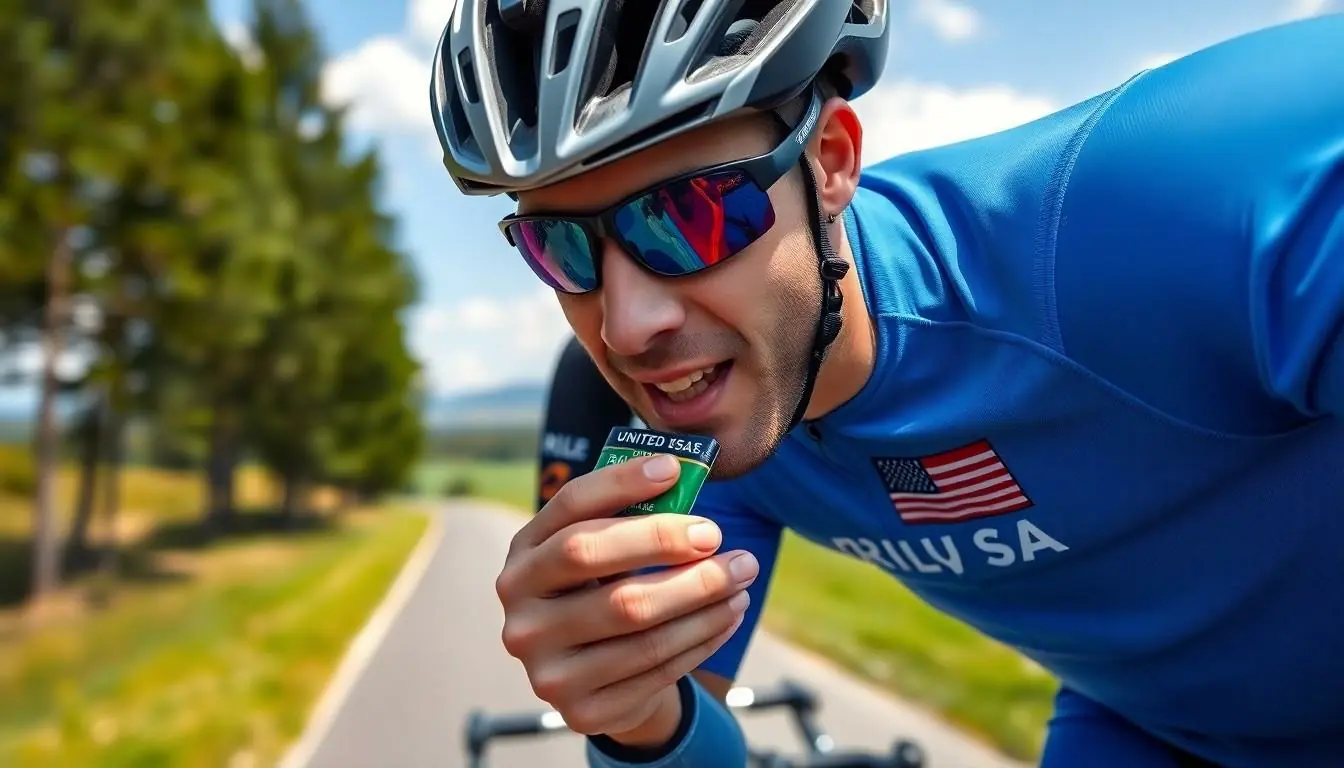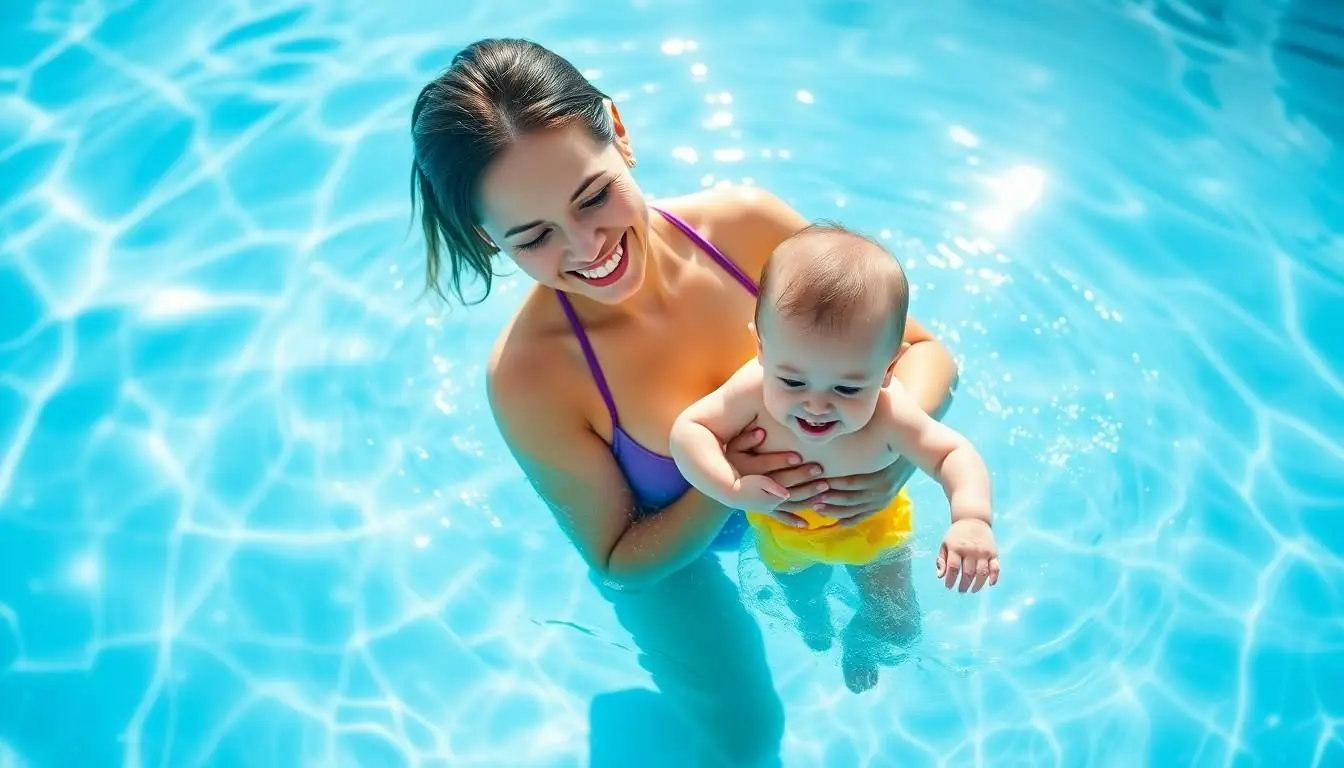Diving into the world of swimming can feel like jumping into the deep end without a life jacket. But fear not! With the right guidance and a splash of enthusiasm, anyone can transform from a landlubber to a water-loving fish. Swimming isn’t just a fun way to beat the heat; it’s a fantastic workout that builds strength, endurance, and confidence.
Table of Contents
ToggleUnderstanding Swimming Basics
Swimming opens a world of enjoyment and fitness. Grasping the fundamentals enhances both safety and proficiency in the water.
Importance of Learning to Swim
Safety remains a primary reason to learn swimming. Drowning poses a significant risk, especially for children. Statistics show that around 3,960 unintentional drownings occur annually in the U.S. Learning to swim can mitigate this risk. Additionally, swimming promotes a healthy lifestyle. Regular practice improves cardiovascular health, builds muscle strength, and boosts flexibility. It provides an excellent low-impact workout, making it suitable for all age groups. Gaining water confidence uplifts self-esteem and encourages social activities. Engaging in swimming opens opportunities for fun and leisure, such as beach outings and pool parties.
Essential Swimming Skills
Fundamental skills form the basis for effective swimming. Floating enables swimmers to maintain body position in the water, conserving energy. Kicking propels movement and provides balance while swimming. Breathing techniques ensure proper oxygen intake during strokes. Learning the freestyle stroke establishes the foundation for speed and efficiency. Backstroke offers an alternative method to swim while keeping the face out of the water. Mastering these essential skills allows for progress and builds confidence. Practicing in a controlled environment like a pool offers the safest way to develop these competencies. Classes with instructors tailor training to individual needs, enhancing learning experiences.
Choosing the Right Swim Gear

Selecting appropriate swim gear is essential for both comfort and performance. The right equipment enhances the overall swimming experience.
Swimsuits and Accessories
Swimsuits should fit comfortably and allow for ease of movement. Fabrics like nylon and spandex offer durability and flexibility. Women’s one-piece suits provide good coverage, while bikinis allow for more freedom. Men often choose swim trunks or jammers based on preference. Accessories such as swim fins and kickboards support technique improvement. These tools can enhance kicking strength, helping beginners develop vital skills.
Goggles and Caps
Goggles protect eyes from chlorine and improve visibility underwater. Look for goggles that create a snug seal and are comfortable to wear. Various styles cater to personal preferences, such as tinted or clear lenses. Swim caps reduce drag, helping swimmers glide through the water more efficiently. Many caps are made from silicone or latex, offering different levels of comfort. Choosing caps helps keep hair dry and minimizes maintenance after swimming.
Basic Swimming Techniques
Swimming requires mastering essential techniques to build confidence and efficiency in the water. Focus on developing breathing, floating, and kicking skills, as these form the foundation for a successful swimming experience.
Breathing Techniques
Proper breathing plays a vital role in swimming efficiently. Swimmers should inhale through the mouth when turning their head to the side. Exhaling occurs underwater through the nose for a smooth rhythm. Practicing this technique can help maintain endurance and stay relaxed. Many instructors suggest starting with simple exercises, like blowing bubbles while submerged, to get comfortable with exhaling. Control over breath reduces the risk of inhaling water and aids in creating a natural flow with each stroke.
Floating and Kicking
Floating and kicking are fundamental skills that enhance buoyancy and propulsion. Beginners often start by mastering the dead man’s float, which involves lying on the back and relaxing. Maintaining a relaxed body position helps to conserve energy. Kicking efficiently while holding onto the pool’s edge or a kickboard promotes balance and strengthens leg muscles. The flutter kick, characterized by alternating legs in a gentle movement, creates forward motion. Swimmers should keep their legs straight while allowing the feet to point slightly outward, ensuring a streamlined position for effective swimming.
Safety Tips for Beginners
Safety remains a top priority for new swimmers. Following guidelines helps prevent accidents and ensures a more enjoyable experience.
Pool Safety Guidelines
Check for lifeguards on duty before entering a pool. Lifeguards provide an added layer of safety through active monitoring. Use designated areas for shallow and deep water, as these are marked for different skill levels. Additionally, never swim alone; having a buddy enhances safety while in the water. Always ensure children are supervised closely. Familiarize oneself with pool rules, including diving restrictions, and observe these rules at all times. In case of an emergency, understand how to locate and use lifesaving equipment.
Open Water Swimming Precautions
Choose swimming locations with lifeguards present, especially for beginners. Water currents and waves can be unpredictable, making safe areas crucial. Swim parallel to the shore to avoid drifting too far away. Pay attention to weather conditions and avoid swimming in storms or high winds. Bring a buddy for added safety and stay within designated swimming zones. Use bright colored swim caps to enhance visibility. Always check for local wildlife alerts, such as jellyfish or strong currents, to stay informed of potential hazards.
Finding Swimming Classes
Finding the right swimming class makes a significant difference for beginners. Swimmers should focus on reputable swim schools that emphasize safety and individual progress.
How to Choose a Swim School
Identifying the right swim school involves a few key factors. Research local options, paying attention to reviews and testimonials from other parents and students. Visiting facilities allows individuals to assess cleanliness and safety measures in place. Evaluating instructors’ qualifications is essential, especially their experience with beginner-level students. Checking class sizes plays a role; smaller groups often lead to more personalized attention. Lastly, considering scheduling flexibility helps accommodate personal commitments.
Benefits of Professional Instruction
Professional instruction provides numerous advantages for novice swimmers. Structured lessons lead to quicker skill acquisition, enabling students to grasp techniques effectively. Instructors offer valuable feedback that enhances performance and builds confidence. Tailored programs address individual needs, making learning more efficient. Safety knowledge becomes a priority, ensuring swimmers are aware of potential risks. Additionally, professional classes often create a supportive social environment, encouraging camaraderie and motivation among peers. Engaging with experienced instructors fosters a love for swimming and establishes a lifelong skill.
Swimming offers a rewarding journey for beginners eager to embrace the water. With the right mindset and guidance, anyone can transform from a novice to a confident swimmer. The skills learned not only enhance safety but also contribute to overall fitness and well-being.
Taking swimming lessons in a supportive environment can make all the difference. It fosters not just technical skills but also social connections that enrich the experience. By prioritizing safety and choosing appropriate gear, beginners can enjoy swimming while minimizing risks.
Ultimately, the benefits of swimming extend beyond the pool. It promotes a healthier lifestyle and opens doors to new recreational opportunities. So dive in and discover the joy of swimming; it’s an adventure worth taking.





